ENVIRONMENTAL
In addition to delivering more environmentally friendly products to customers, we will work to promote environmental conservation and pollution prevention through our environmental management system.
We acquired ISO14001 certification in 2003 in order to realize our environmental policy and protect the global environment. Since then, all employees have been engaged in various activities aimed at reducing the burden on environment. In addition to environmental consideration of plant facilities, specific measures such as improvement of the work environment within the factory, reuse of cutting oil, and reduction of the use of specified chemical substances are implemented with clear objectives.
Carbon neutral activities
By 2030, we aim to reduce CO2 emission by 30% (compared to FY 2019)
By 2050, we aim to achieve zero CO2 emission.
CO2 emissions as of 2019: 15,633 tons
CO2 emission target for 2030: 10,318 tons
CO2 emission target for 2050: Zero
Resource recycling activities (3R activities)
We are actively sorting waste to reduce the amount of waste generated. Recycling of plastic bins, used paper, PP bands, etc. Recycling of waste oil discharged from production equipment. We are engaged in resource recycling activities such as the reuse of reusable equipment parts and measuring instrument parts.
Solar power
As part of our efforts to reduce CO2 emissions, we have installed solar power generation panels using PPA at Factories 2 to 4 since fiscal 2023. This solar power generation provides for 9.3% of the electricity consumption at the Kota Factory.
Oil-water separation tank, regulating reservoir
Oil contained in rainwater and other types of water discharged from the factory premises is separated using a three-tank oil/water separator tank and discharged outside the company via a regulating reservoir.
Use of major environmentally hazardous substances
Our products meet the regulated values for hexavalent chromium, cadmium, mercury, and lead, which are the primary substances regulated under the European End-of-Life Vehicles Directive (ELV Directive).
Status of non-inclusion of ELV regulated substances
| Substance | Regulated values | Achievement status |
|---|---|---|
| Cd (Cadmium) | Less than 0.01% | Achieved |
| Pb (Lead) | Less than 0.1% | Achieved |
| Hg (Mercury) | Less than 0.01% | Achieved |
| Cr6+ (Hexavalent Chromium) | Less than 0.1% | Achieved |
As of April 2025
IMPROVEMENT & DEVELOPMENT
Based on policy development activities, we are continuously improving our manufacturing processes and work structures.
To this end, we have introduced improvement circle activities and a creative and ingenious proposal system to enhance the improvement awareness of each employee. Additionally, we have implemented diverse human resource development programs, such as QC and TPM training and qualification acquisition support, to support the skill development of our employees.
Policy development activities
In order to implement continuous improvement activities based on the Company Policy, we have set priority implementation items and target values for each department and we promote them in a planned manner.

"M Zero Activities" based on policy development
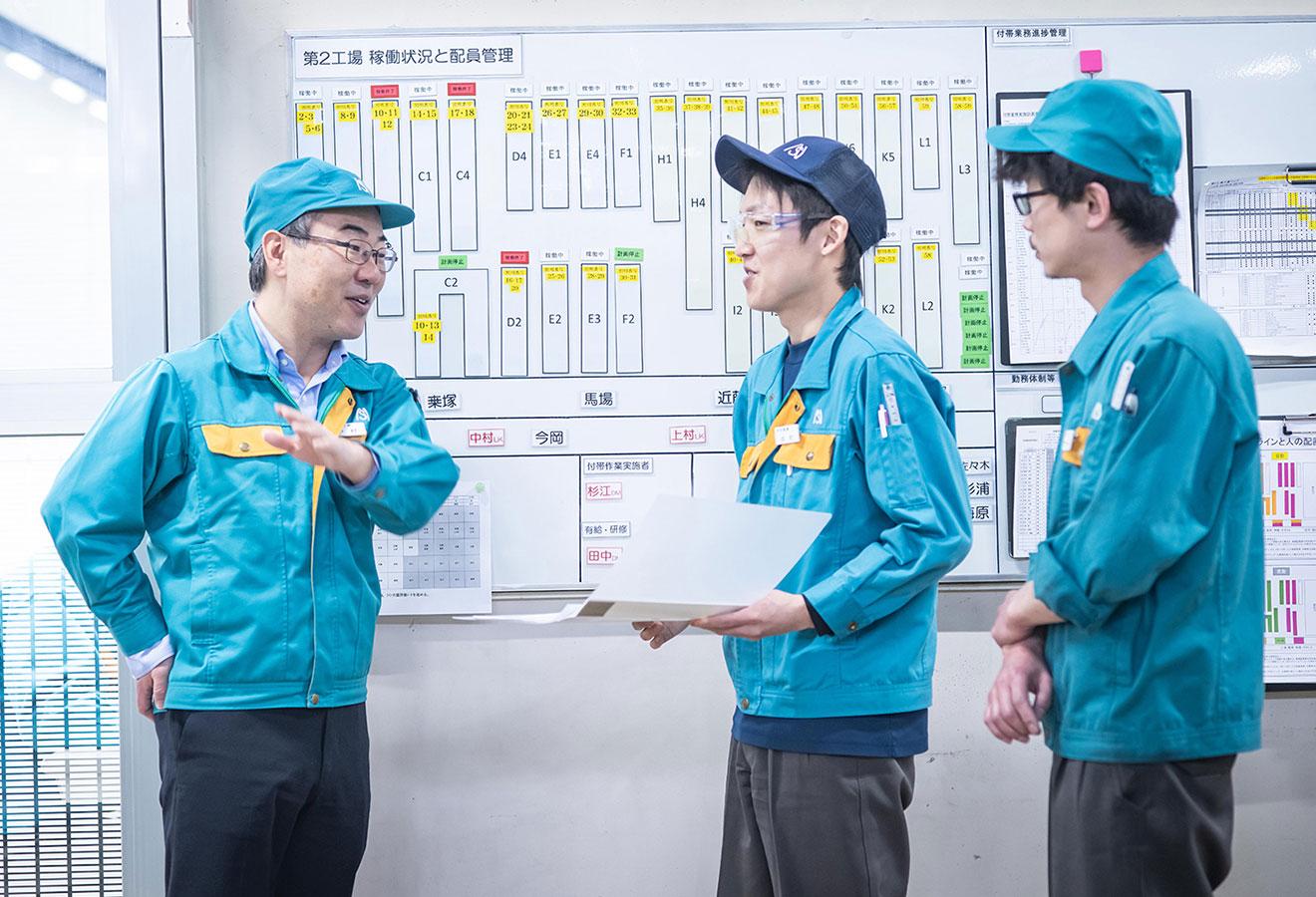
Policy development activity plan
Improvement circle activities
We conduct "improvement circle" activities that combine TPM's small group activities and QC circles.
Improvement circles are present in all departments, and activity presentations are held in October and March each year.
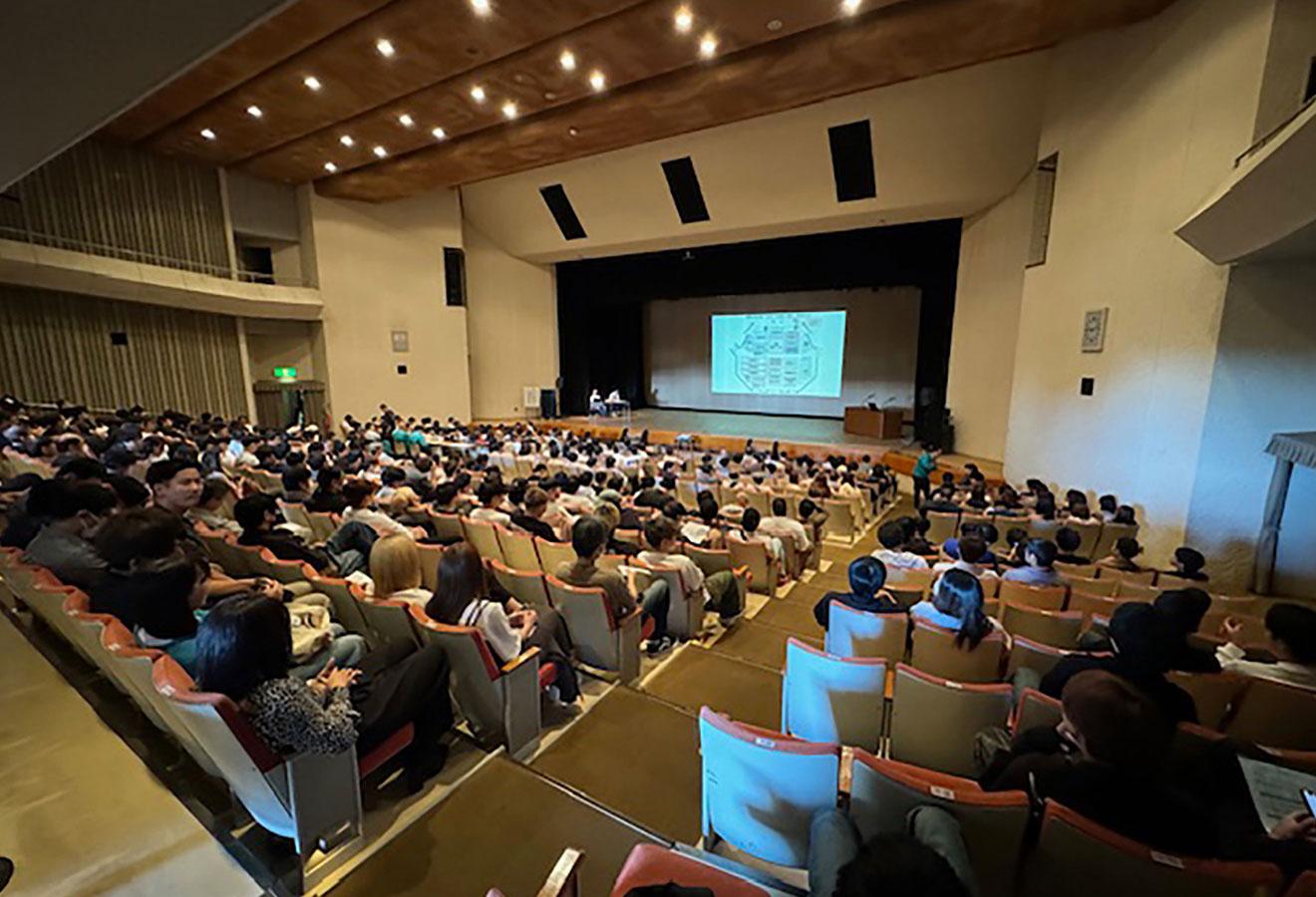
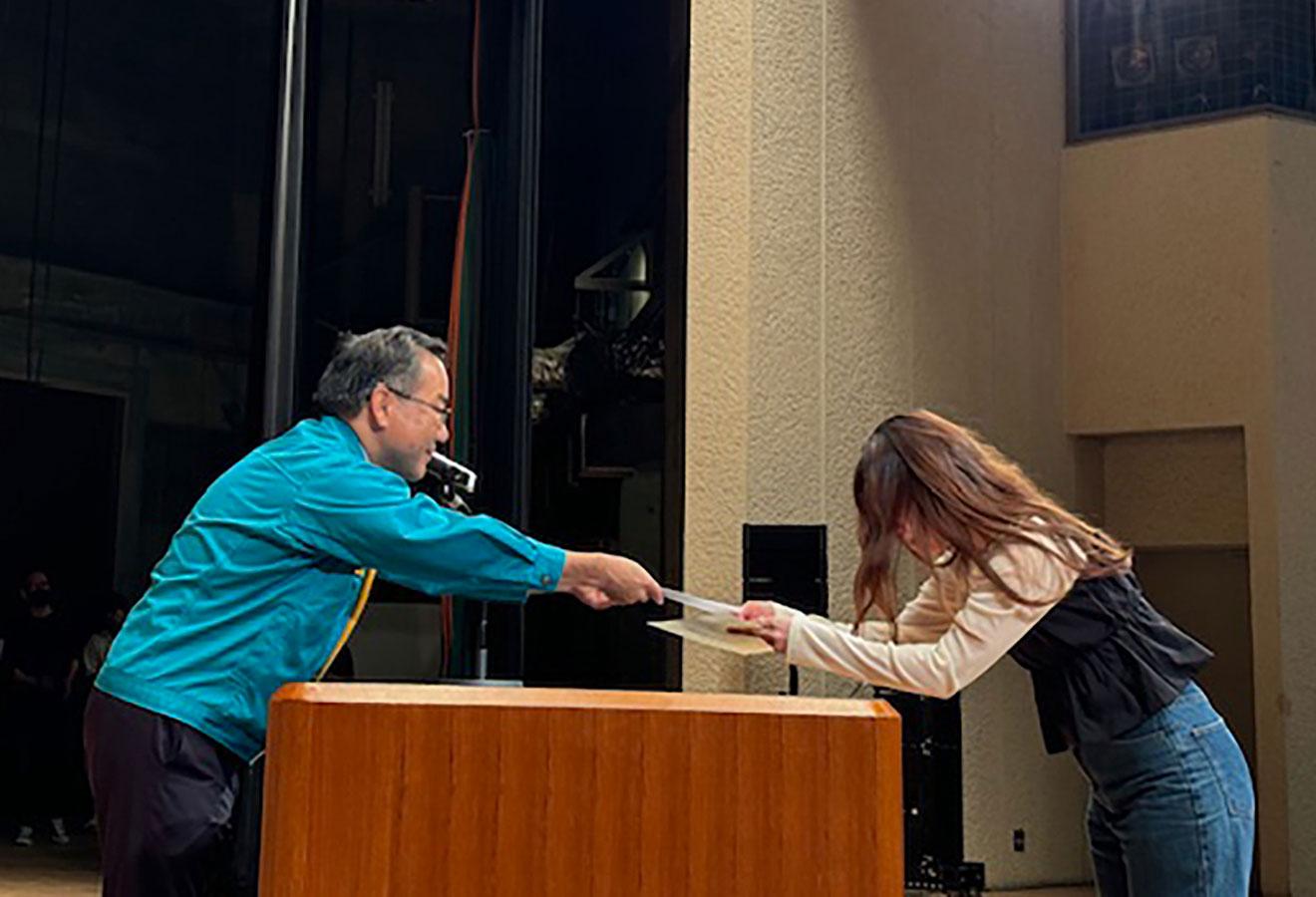
Machine maintenance
In addition to preventive and predictive maintenance of major facilities carried out according to inspection plans based on years of experience, necessary tools and replacement parts are efficiently stored and managed using computers.
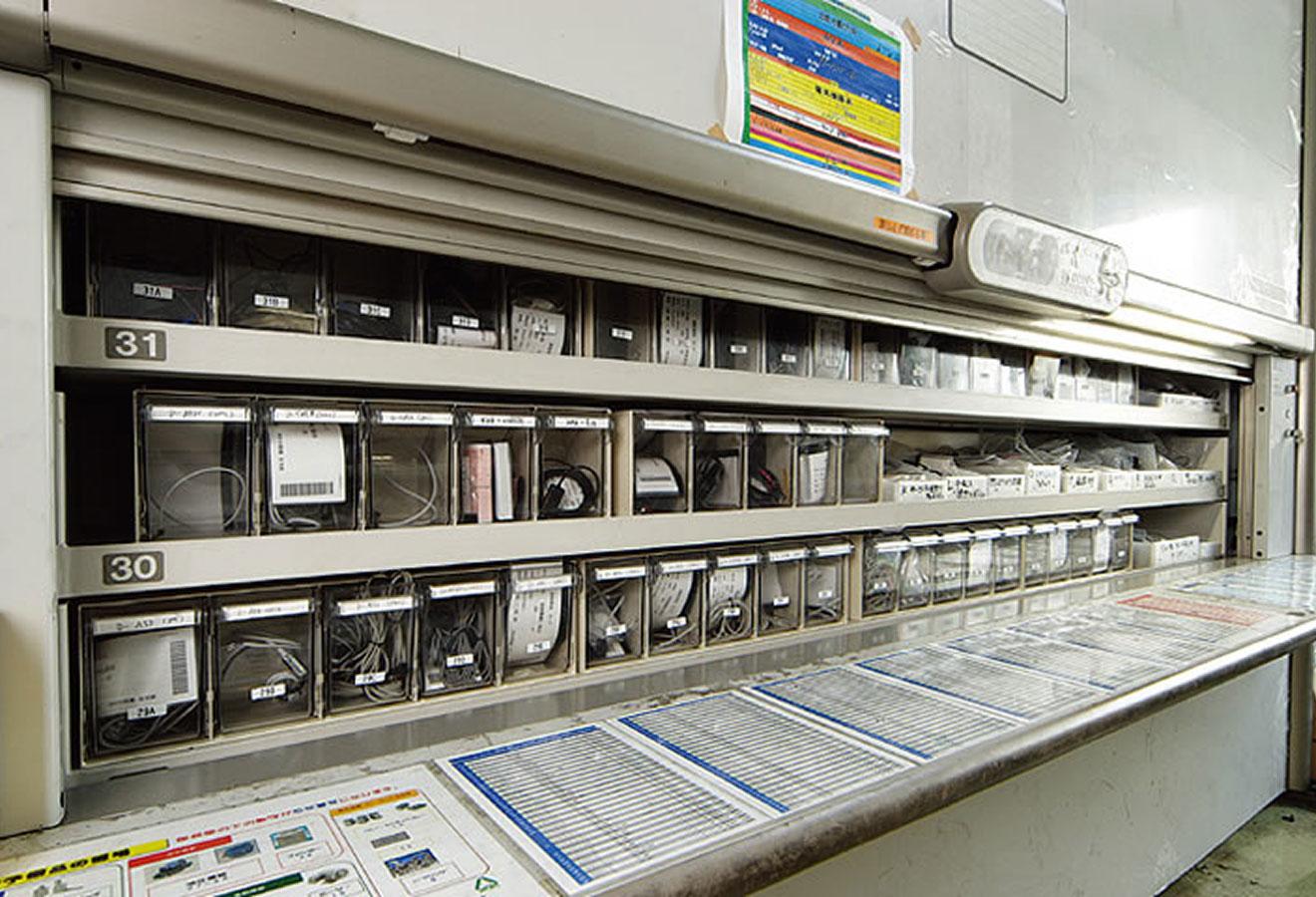
Computer-managed spare parts storage shelves
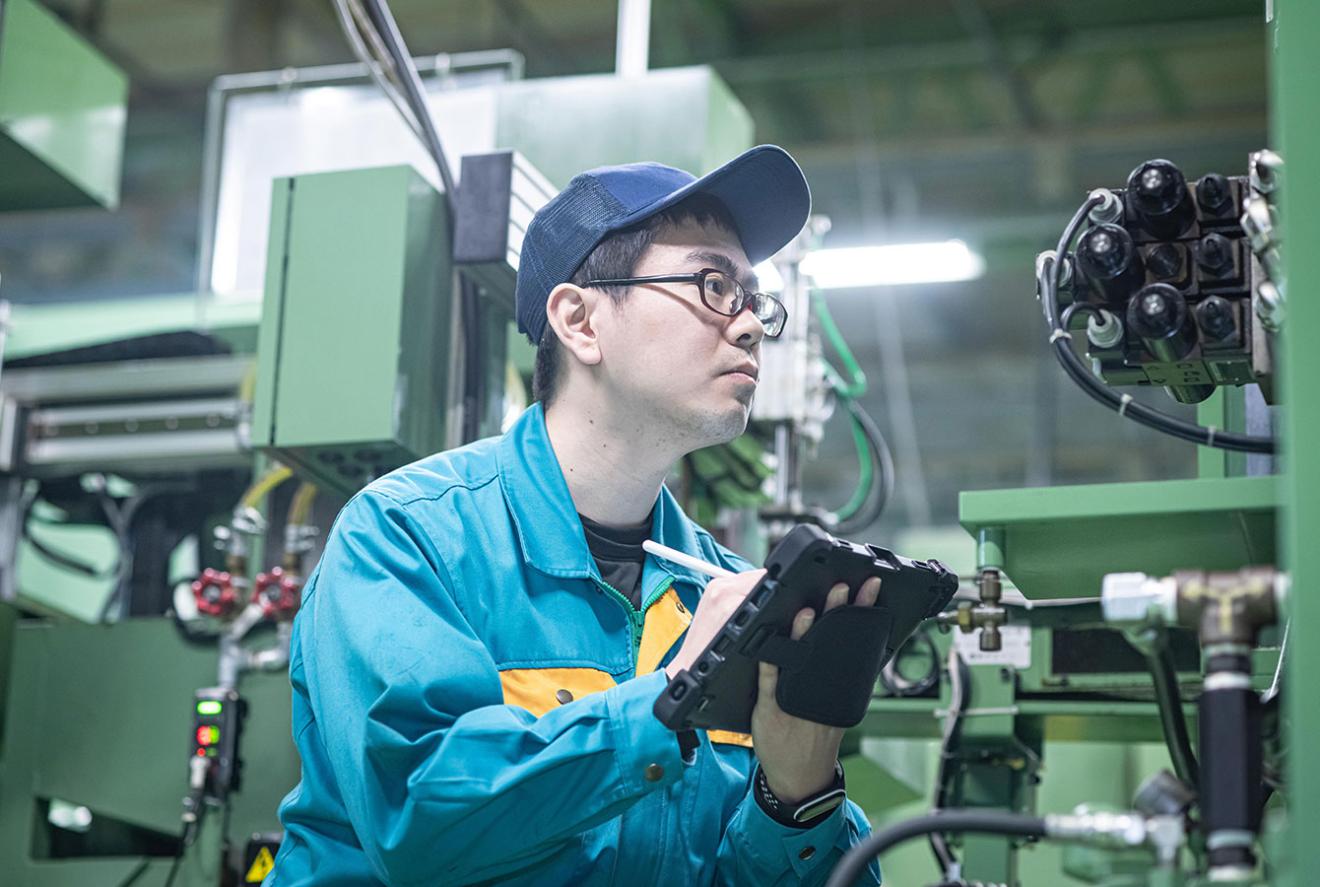
Registration of a maintenance plan




